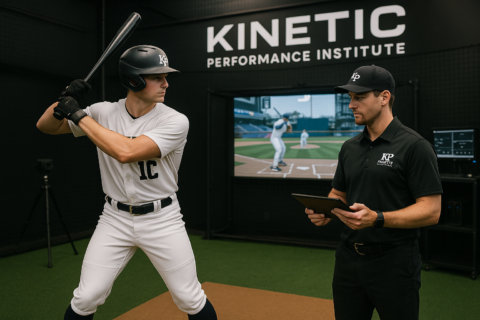Pitchers and Arm Injuries: Looking at Some of the Real Reasons for the Problem
- In the high-stakes world of amateur, college, and professional baseball, where pitcher injury rates are spiraling upwards, the physical well-being of pitchers is of paramount importance. The unfortunate reality is that arm injuries have plagued the careers of many talented pitchers, jeopardizing their dreams and leaving them sidelined. But why do these injuries occur? Are they inevitable? The answer lies in understanding the critical link between strength, range of motion, and injury prevention. In this article, we delve into the science behind arm injuries in baseball pitchers and explore how KPI – Kinetic Performance Institute and its cutting-edge training systems are revolutionizing arm care.
The Anatomy of Arm Injuries
Pitching a baseball is an explosive movement that subjects the pitcher’s arm to extreme forces. Over time, repetitive motion and inadequate recovery can lead to various arm injuries, including torn ligaments, muscle strains, and stress fractures. While these injuries can be caused by a combination of factors, strength and range of motion deficits play a significant role.
Research studies by armcare.com have shown that pitchers with diminished strength and limited range of motion are more prone to arm injuries. When the muscles responsible for stabilizing the shoulder and elbow are weak, the ligaments and tendons bear excess stress, increasing the risk of injury. Similarly, reduced range of motion puts additional strain on the arm during the pitching motion, leading to overcompensation and potential damage.
The Crucial Role of Monitoring
To mitigate the risk of arm injuries, baseball pitchers must prioritize monitoring their strength and range of motion regularly. Traditionally, this process relied on subjective assessments and manual measurements, which were prone to inaccuracies and inefficiencies. However, in today’s digital age, technology has emerged as a game-changer.
Armcare.com, a leading platform dedicated to arm care in baseball, has introduced advanced tools and systems that empower pitchers to monitor their physical capabilities with precision. These tools include motion capture systems, wearable sensors, and data analytics software, enabling pitchers to gather comprehensive insights into their performance and identify potential red flags before injuries occur.
Enter KPI: Revolutionizing Arm Care
Among the trailblazers in the arm care industry, KPI – Kinetic Performance Institute stands tall as a leading proponent of cutting-edge training systems designed to optimize performance and reduce the risk of injuries. By leveraging the power of technology and data-driven approaches, KPI has become the go-to solution for baseball pitchers seeking to unlock their true potential while safeguarding their arms.
Through KPI’s state-of-the-art training systems, pitchers can monitor their strength and range of motion in real-time, capturing crucial metrics such as shoulder stability, arm speed, and muscle imbalances. These metrics provide objective insights into their physical capabilities and enable personalized training programs tailored to address individual weaknesses and prevent potential injuries.
The KPI Advantage
KPI’s commitment to innovation has garnered accolades from professional baseball players and renowned sports medicine experts alike. By combining advanced technology with evidence-based training methodologies, KPI has transformed the way pitchers approach arm care.
The KPI Advantage encompasses:
– Early detection and prevention: By continuously monitoring key metrics, pitchers can detect strength and range of motion deficits early on, allowing them to take proactive measures to prevent injuries.
– Personalized training programs: KPI’s data-driven approach enables pitchers to receive customized training regimens that target specific weaknesses and optimize their performance.
– Real-time feedback: With instant feedback on their performance, pitchers can make necessary adjustments, refine their technique, and maximize their potential while minimizing the risk of injuries.
Conclusion
Baseball pitchers must recognize the critical connection between strength, range of motion, and injury prevention. With arm injuries derailing the careers of promising athletes, a new era of arm care has emerged. Thanks to the advancements in technology and the pioneering work of institutions like KPI, pitchers now have the means to monitor their physical capabilities with precision, paving the way for a healthier, more successful future.Visit Armcare.com to explore the cutting-edge arm care tools and systems revolutionizing the baseball industry. Embrace KPI’s data-driven approach, unleash your true potential, and ensure your arm remains an unstoppable force on the mound. It’s time to prioritize arm care and rewrite the narrative of success for baseball pitchers.


